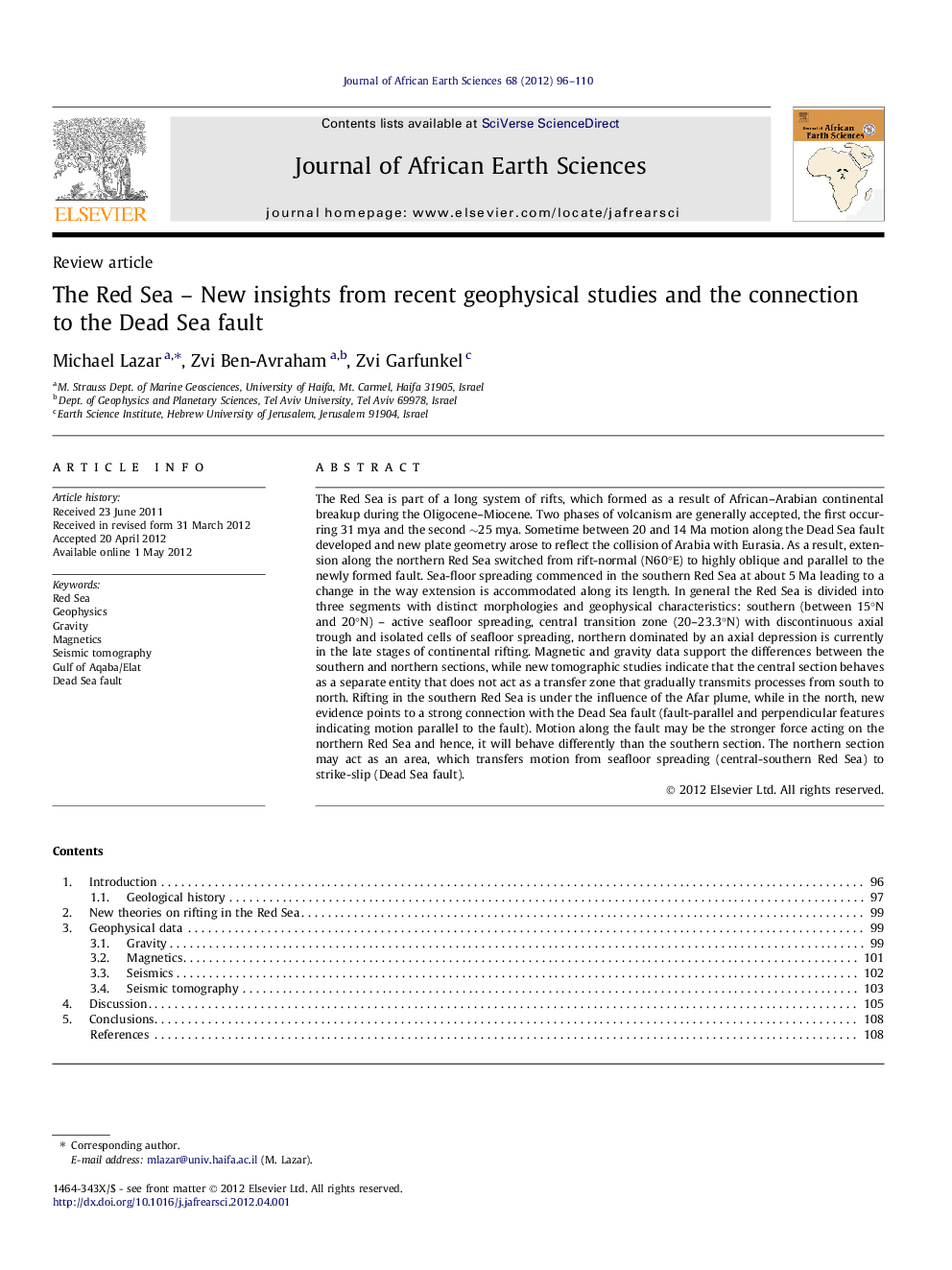| کد مقاله | کد نشریه | سال انتشار | مقاله انگلیسی | نسخه تمام متن |
|---|---|---|---|---|
| 4729051 | 1640236 | 2012 | 15 صفحه PDF | دانلود رایگان |

The Red Sea is part of a long system of rifts, which formed as a result of African–Arabian continental breakup during the Oligocene–Miocene. Two phases of volcanism are generally accepted, the first occurring 31 mya and the second ∼25 mya. Sometime between 20 and 14 Ma motion along the Dead Sea fault developed and new plate geometry arose to reflect the collision of Arabia with Eurasia. As a result, extension along the northern Red Sea switched from rift-normal (N60°E) to highly oblique and parallel to the newly formed fault. Sea-floor spreading commenced in the southern Red Sea at about 5 Ma leading to a change in the way extension is accommodated along its length. In general the Red Sea is divided into three segments with distinct morphologies and geophysical characteristics: southern (between 15°N and 20°N) – active seafloor spreading, central transition zone (20–23.3°N) with discontinuous axial trough and isolated cells of seafloor spreading, northern dominated by an axial depression is currently in the late stages of continental rifting. Magnetic and gravity data support the differences between the southern and northern sections, while new tomographic studies indicate that the central section behaves as a separate entity that does not act as a transfer zone that gradually transmits processes from south to north. Rifting in the southern Red Sea is under the influence of the Afar plume, while in the north, new evidence points to a strong connection with the Dead Sea fault (fault-parallel and perpendicular features indicating motion parallel to the fault). Motion along the fault may be the stronger force acting on the northern Red Sea and hence, it will behave differently than the southern section. The northern section may act as an area, which transfers motion from seafloor spreading (central-southern Red Sea) to strike-slip (Dead Sea fault).
Journal: Journal of African Earth Sciences - Volume 68, 15 June 2012, Pages 96–110